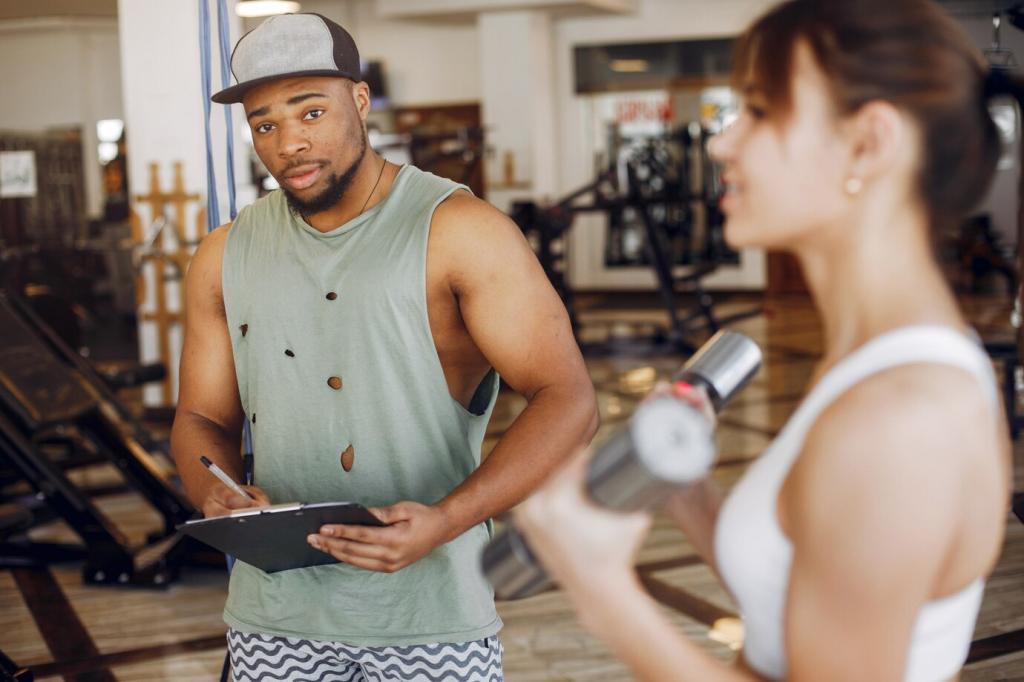
Adapting Exercise Routines for Injuries: Train Smarter, Heal Stronger
Chosen theme: Adapting Exercise Routines for Injuries. Discover practical, compassionate strategies to keep moving safely while you heal, with stories, science-backed tips, and community-driven encouragement. Share your current challenge in the comments and subscribe for weekly, injury-smart training ideas.
Start With Understanding Your Injury
Learn to distinguish sharp, escalating pain from manageable training discomfort. Pain that lingers or alters your movement is a stop sign; mild, fading pressure may be tolerable. Track sensations carefully and share patterns with your coach or therapist for better guidance.
Start With Understanding Your Injury
Bring your training diary to appointments, ask for specific movement tolerances, and clarify red flags. Request examples such as acceptable ranges for squats or pressing. Partnership beats guessing. Drop your questions below so our community can crowdsource thoughtful, experience-based tips.
Start With Understanding Your Injury
Shift focus from personal records to consistent, quality movement. Healing is nonlinear; expect good days and setbacks. Use flexible milestones like range-of-motion gains, stable sleep, and confidence under light loads. Share a past rebound story to motivate others navigating similar uncertainty.
Assess and Establish Baselines
Range-of-motion self-checks
Compare the injured side to the uninjured side for gentle, pain-free ranges. Use a wall test for ankles, shoulder flexion against the floor, or spine flexion via fingertips-to-floor distance. Record weekly and celebrate small, repeatable improvements to maintain motivation and clarity.
Strength and asymmetry snapshots
Use light dumbbells, resistance bands, or bodyweight holds to estimate tolerable effort. Keep reps shy of pain and note any shakiness. Track symmetry trends rather than chasing perfection. Comment your most surprising finding; someone else will likely relate and learn from it.
Movement pattern audit with video
Film squats, hinges, pushes, and pulls from two angles. Look for compensations like shifting, shrugging, or early heel lift. Compare to previous footage if available. Invite a trusted friend or coach to review, and post your biggest aha moment for collective feedback.
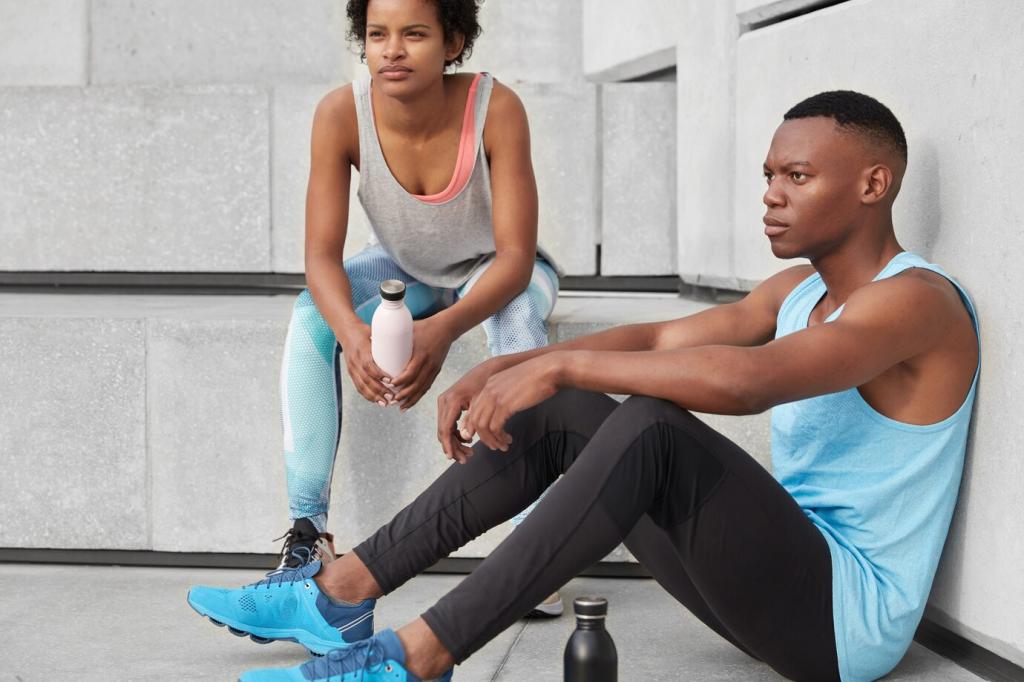
Smart Exercise Modifications
Lower-body adjustments when knees or ankles complain
Swap deep squats for box squats, goblet holds, or supported split squats. Elevate heels if ankle mobility limits depth. Emphasize slow eccentrics and isometrics near comfortable ranges. Many runners report relief using step-ups with rails while building confidence pain-free.
Upper-body tweaks for cranky shoulders or elbows
Choose neutral-grip presses, landmine variations, or half-kneeling cable work. Shorten ranges to pain-free zones and slow the lowering phase. Replace kipping with strict, controlled reps. When Sara strained her rotator cuff, tempo landmine presses rebuilt strength without flare-ups, restoring trust gradually.
Core and spine-friendly training options
Prioritize anti-rotation and anti-extension drills such as dead bugs, Pallof presses, and suitcase carries. For hinges, use hip-dominant patterns with dowel feedback and light loads. If flexion bothers you, train tall kneeling positions first. Comment which core drill feels best today.
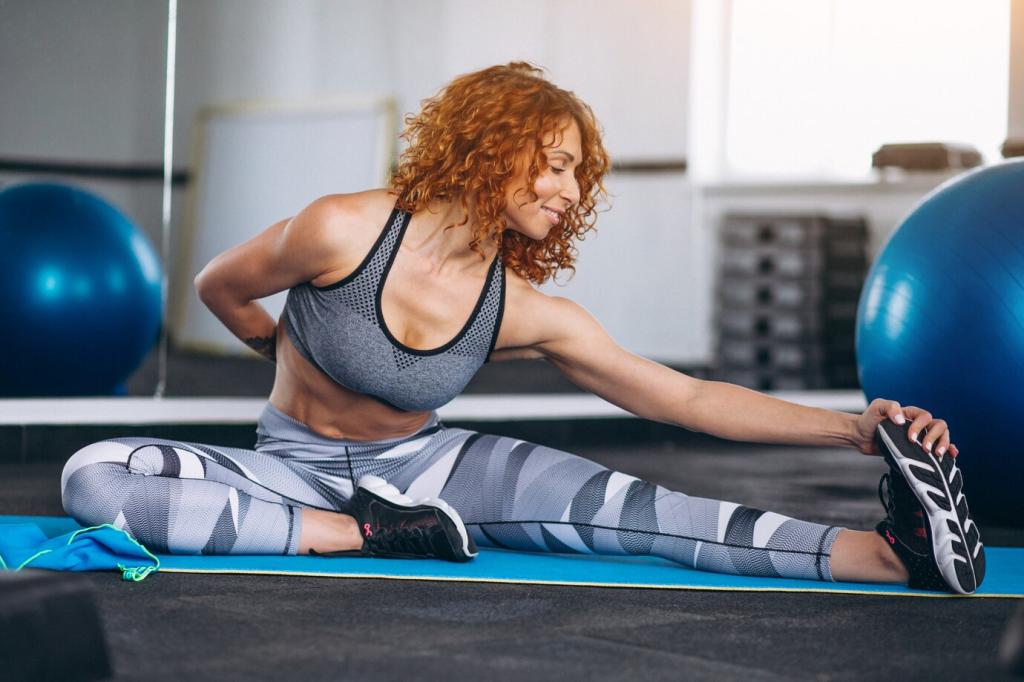
Auto-regulation with RPE and RIR
Rate sets by perceived effort, stopping with two to three reps in reserve before technique degrades. Pain-free quality is the priority. If discomfort rises, reduce load, shorten range, or extend rest. Share today’s RPE notes to refine tomorrow’s adjustments intelligently and safely.
Exercise selection filters
Ask three questions: Does it hurt now? Does pain persist after? Does technique stay crisp? Keep movements that pass all three. Favor unilateral work, cables, and machines for precision. Post your current keep, tweak, and pause lists to help others structure choices.
Progress with range, tempo, and density
Expand pain-free range first, then smooth tempo, then modest load. Alternatively, add sets across the week rather than chasing heavy singles. Progress should feel sustainable, not heroic. Which progression knob will you turn this week—range, tempo, or density? Declare it below.
Aim for consistent sleep and protein-rich meals to support tissue repair. Pair colorful plants with healthy fats and hydration. Many athletes notice fewer flare-ups when they prioritize bedtime routines. Comment your favorite pre-sleep wind-down and breakfast that actually keeps you satisfied.
Recovery Habits That Speed Healing
Sprinkle five-minute mobility breaks throughout the day. Gentle joint circles, diaphragmatic breathing, and easy walks reduce stiffness and steady your nervous system. These tiny investments stack up quickly. Share your go-to micro-break so others can borrow it during busy work schedules.
Recovery Habits That Speed Healing
Mindset, Motivation, and Community
After a calf strain, Maya swapped intervals for brisk walks and ankle isometrics. Weeks later, her stride felt smoother than before. She learned consistency beats ego. Share your version of slowing down without giving up; it may inspire someone starting today.
Mindset, Motivation, and Community
Journal anything measurable: better sleep, calmer pain levels, cleaner reps, or smoother stairs. Stack three daily wins, however small. When motivation dips, revisit them. Comment today’s win—no matter how tiny—to reinforce momentum and celebrate durable, steady progress within our community.
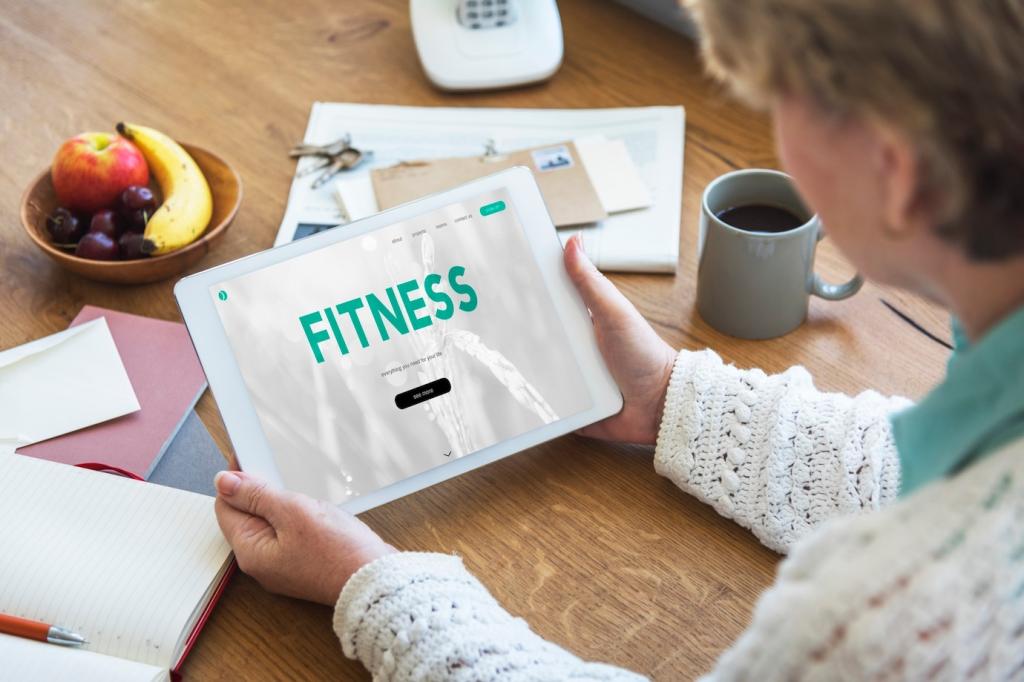
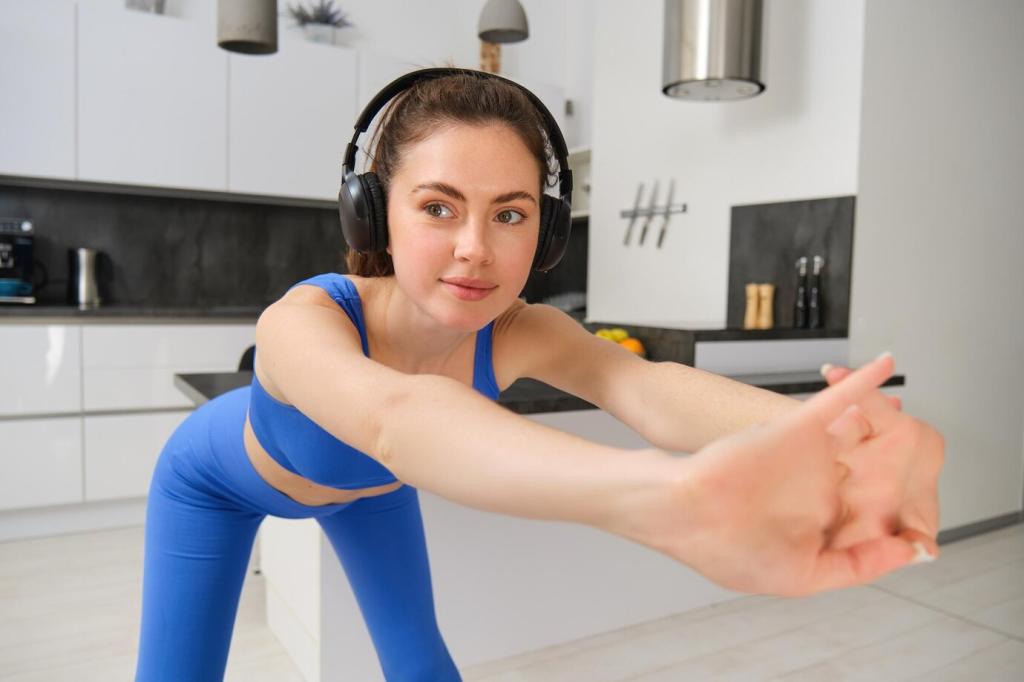
Return-to-Play Roadmap
Aim for pain-free daily activities, stable ranges, and near-symmetry under light to moderate loads. Movements should feel controlled and repeatable. If unsure, hold the line another week. Post your personal criteria to help others refine a thoughtful, patient, and safe return plan.

